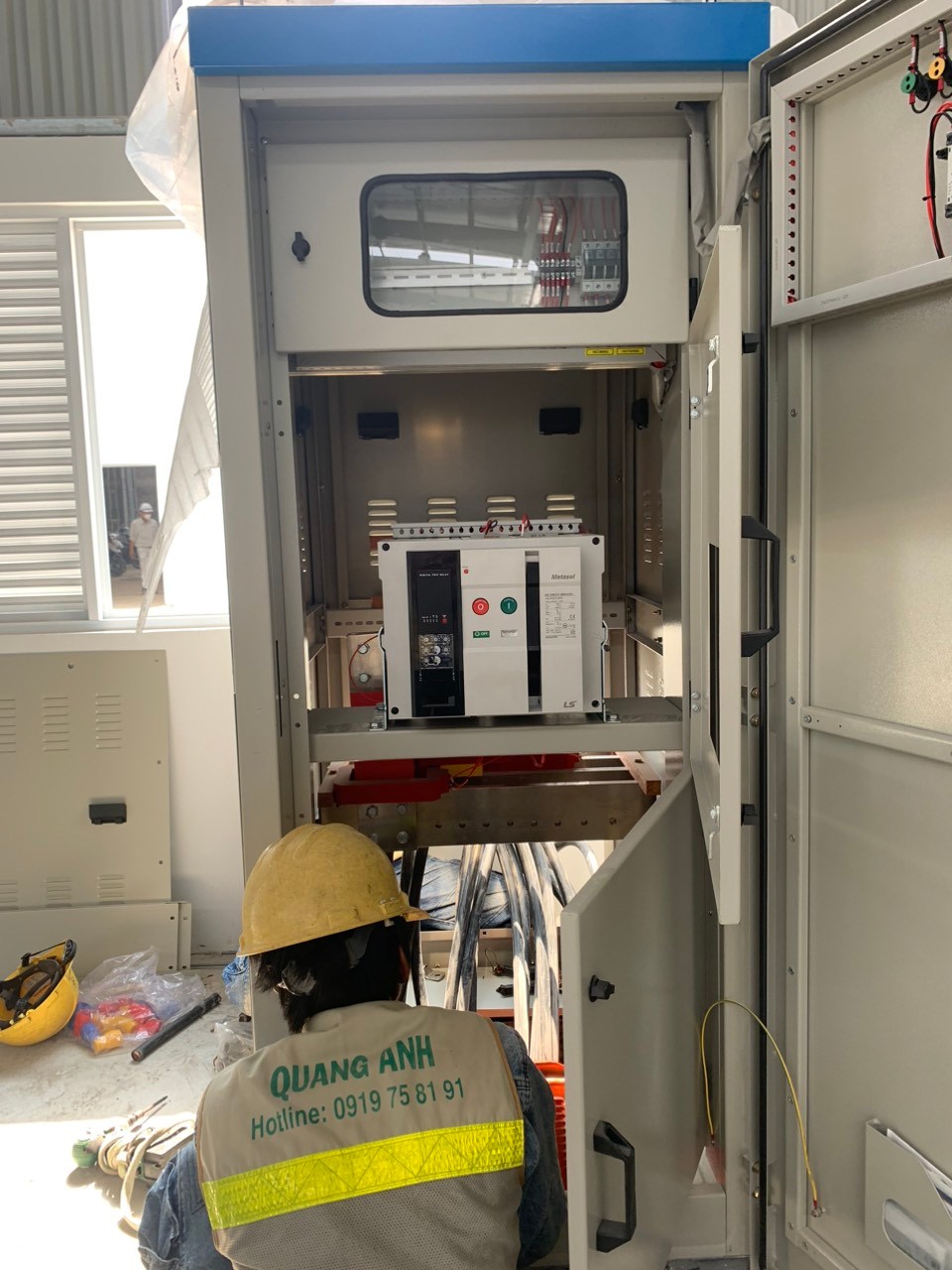The price of full-package electrical installation for industrial factories
Quoting the price for electrical installation in factories is not a simple task for contractors and electrical installation companies. The quoting process requires engineers to have a clear understanding of the project’s details and technical knowledge in the electrical industry, including the functions of each electrical equipment used in factories. The installation team must also have years of experience in the field to ensure high-quality results.
Designing and installing an electrical system in a factory is a comprehensive process from quoting to the operation of the system. It requires contractors to work with integrity, provide accurate quotes for each equipment and installation cost, offer long-term warranties and the safest solutions, especially since continuous production lines require absolute safety.
The price of electrical installation for factories depends on several factors, such as the progress of the construction schedule, payment schedule, cost of equipment and materials, level of difficulty in installation, amount of equipment required, the location of the construction site, and warranty and maintenance periods.”

The steps for electrical installation in industrial factories by Xay Lap Dien Quang Anh
1- Receive information on the construction of the electrical system for factories, make cost estimates, and provide quotations.
If you have a need for installing a standard electrical system, you will go through the following steps when working with electrical contractors to construct the electrical system of your factory, and Xay Lap Dien Quang Anh is no exception. The typical steps are as follows:
- Receive information from customers who need a quote for electrical construction of the factory.
- Conduct a site survey and provide direct consultation. Offer solutions to optimize the electrical system.
- Prepare a rough estimate and quote for the electrical and water installation of the factory.
- Design the electrical system, complete the construction drawings.
- Agree on the plan and rough estimate, both parties negotiate, agree and sign the installation contract.
- Proceed with the implementation of the electrical system as agreed upon.
- Inspect the construction and make payment according to the provisions of the contract.
- Discuss the electrical system and guide how to operate it.
- Warranty the electrical system.
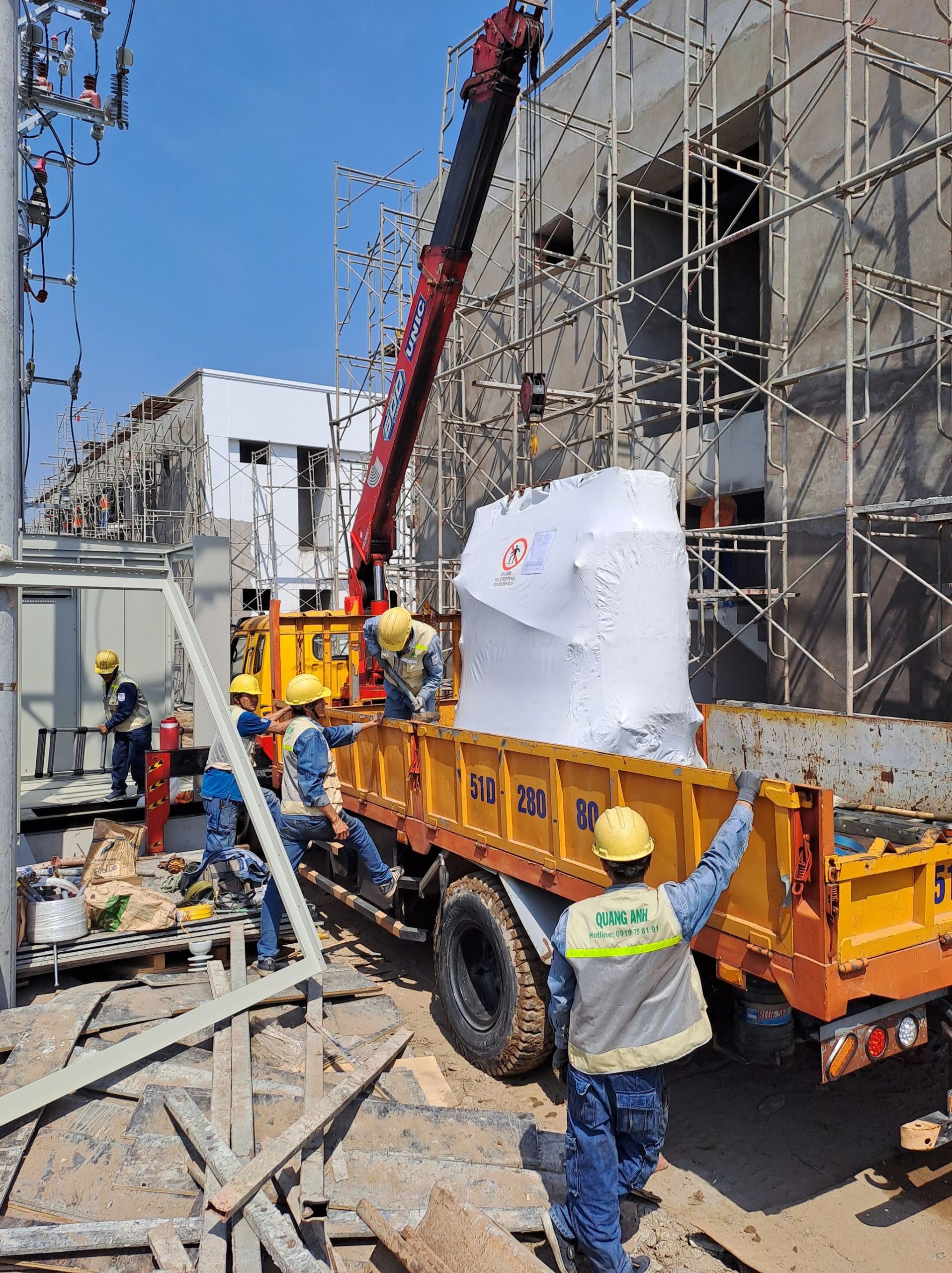
Below, we will delve deeper into some important steps in the process of constructing a factory electrical system such as the design process, the construction process, considerations in operating the electrical system, and construction standards for the electrical system.
2- Design overview for industrial electrical systems
Requirements for designing an industrial electrical system:
Design of 22kV high voltage lines and low voltage transformer stations:
Calculation of the total power supply capacity of the factory, power capacity of the low voltage transformer station, cross-section, length of 22kV high voltage lines, RMU high voltage switchgear, circuit breakers, and power factor compensation cabinets to ensure technical requirements.
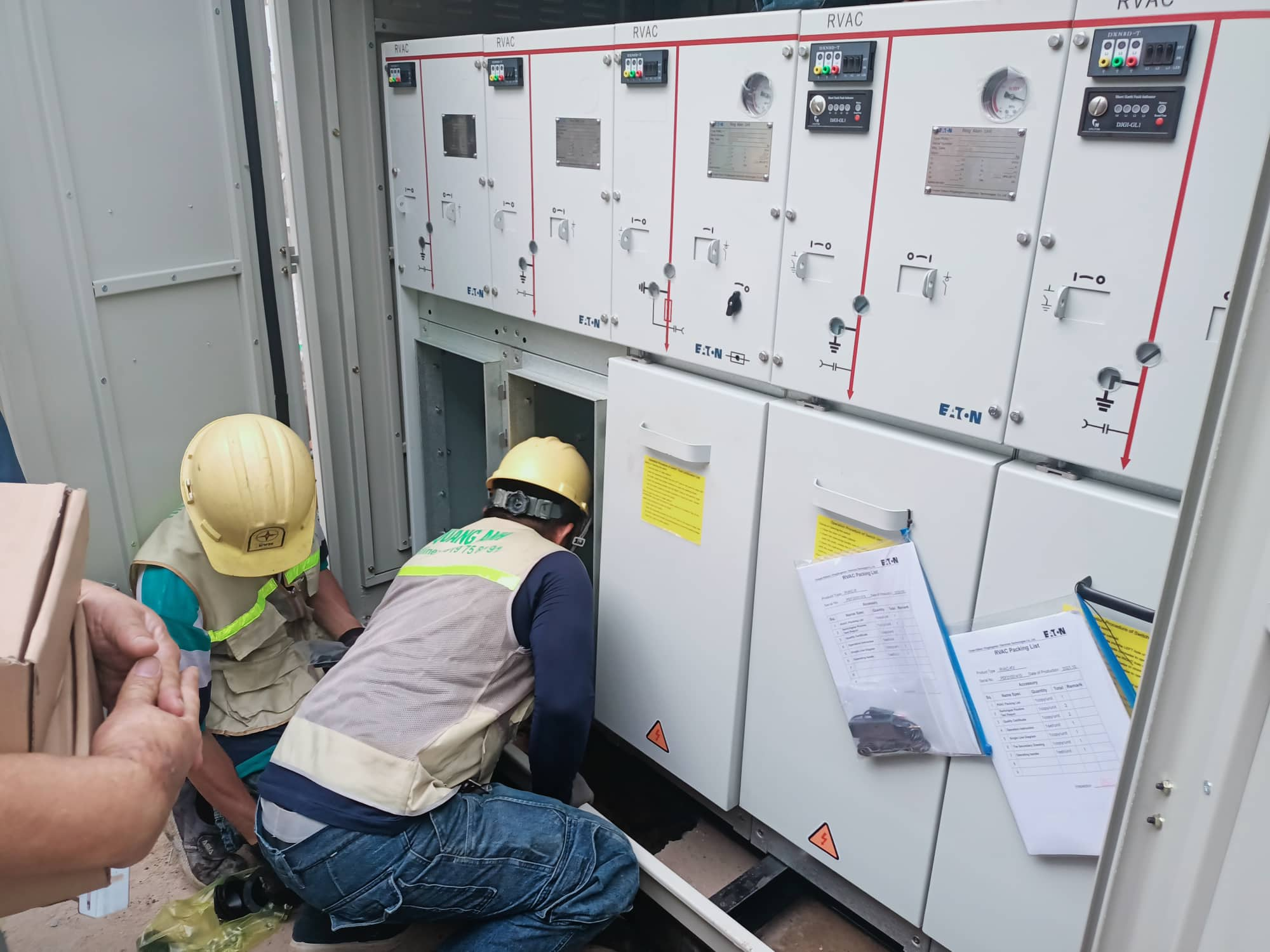
-
Design of the overall electrical system for the workshop:
There are requirements for the design of the main electrical system for the workshop. The design needs to ensure technical accuracy for the wiring and operational efficiency of the workshop.
Design of the cable tray installation:
Safety needs to be ensured for the system and users, while meeting aesthetic requirements.
Design of the lighting system:
Lighting fixtures in the workshop and factory need to be calculated appropriately for each area and purpose such as living, production, and operation to ensure sufficient light intensity and safety for users.
There are solutions for renovation and upgrading:
In cases where electricity consumption exceeds the capacity during operation or becomes damaged over time, there should be measures for repair and upgrading backup in the design.
There are plans for maintaining and repairing the electrical system:
A process of checking and maintaining the system will increase the lifespan, minimize risks and prevent unexpected incidents.
3- Installation of the electrical system in the factory
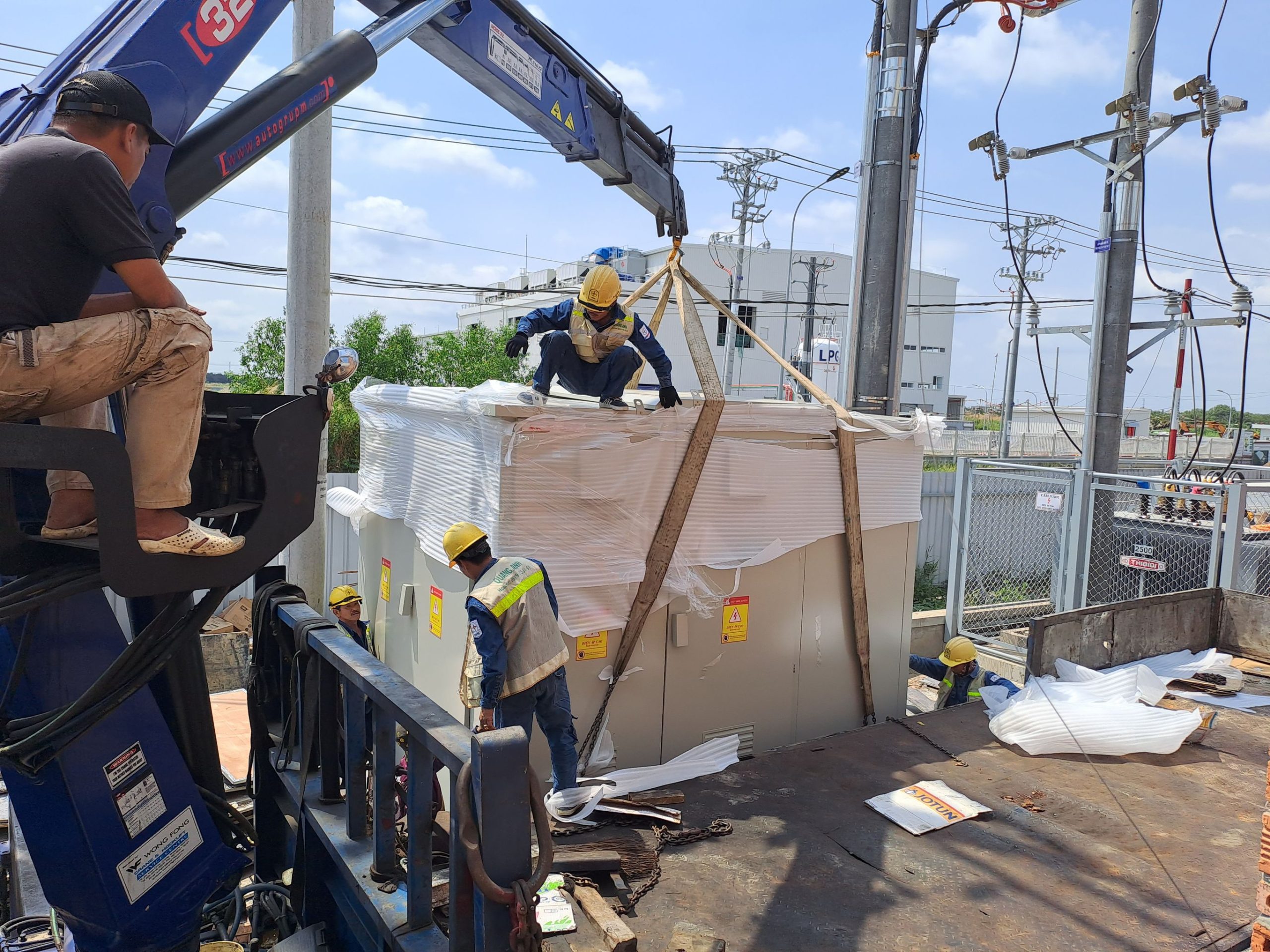
a- Material and equipment preparation
Electrical materials and equipment must be newly purchased and safely transported to the construction site warehouse according to the required construction schedule (at least 3 days before installation). The technical department will inspect the materials and equipment upon arrival at the site to ensure that they meet the technical standards, brand, and origin as stipulated in the tender dossier and other regulations of the owner’s supervision consulting unit (based on the sample material approval report). The construction management department will carry out the procedures for checking and confirming the materials and equipment with the owner’s supervision consulting unit according to the regulations on “Quality management of construction works” before installation. Supplement quality inspection documents for materials and equipment from quality inspection agencies if required. Make a record of acceptance for imported equipment when goods arrive at the construction site according to regulations.
b-Installation of transformer and generator (if available) electrical systems.

- Identify the location, size of the substation, generator, auxiliary fuel tank, location of electrical cabinets, high-voltage cable routes, and connection points of the equipment. Complete all installation details and submit them for approval before installation.
Read and understand the coordinated drawings with other items such as water supply and drainage, fire protection, telecommunications, structure, and architecture to ensure that the construction does not affect the installation space and does not impact the structure or architecture of the building.
c- Construction of reinforced concrete poles and underground medium-voltage cable pulling.
- Excavate soil and install reinforced concrete poles, foundation beams, and leveling blocks for the transformer station while installing grounding posts. Install uPVC pipes for high voltage cable conduit and low voltage cable conduit before laying the foundation of the transformer station. The pipe joints must be sealed with specialized glue, and the pipe ends must be cleaned before sealing. Use flexible conduits for areas with height changes to facilitate cable pulling. Pour concrete for the foundation and base of the transformer and generator.
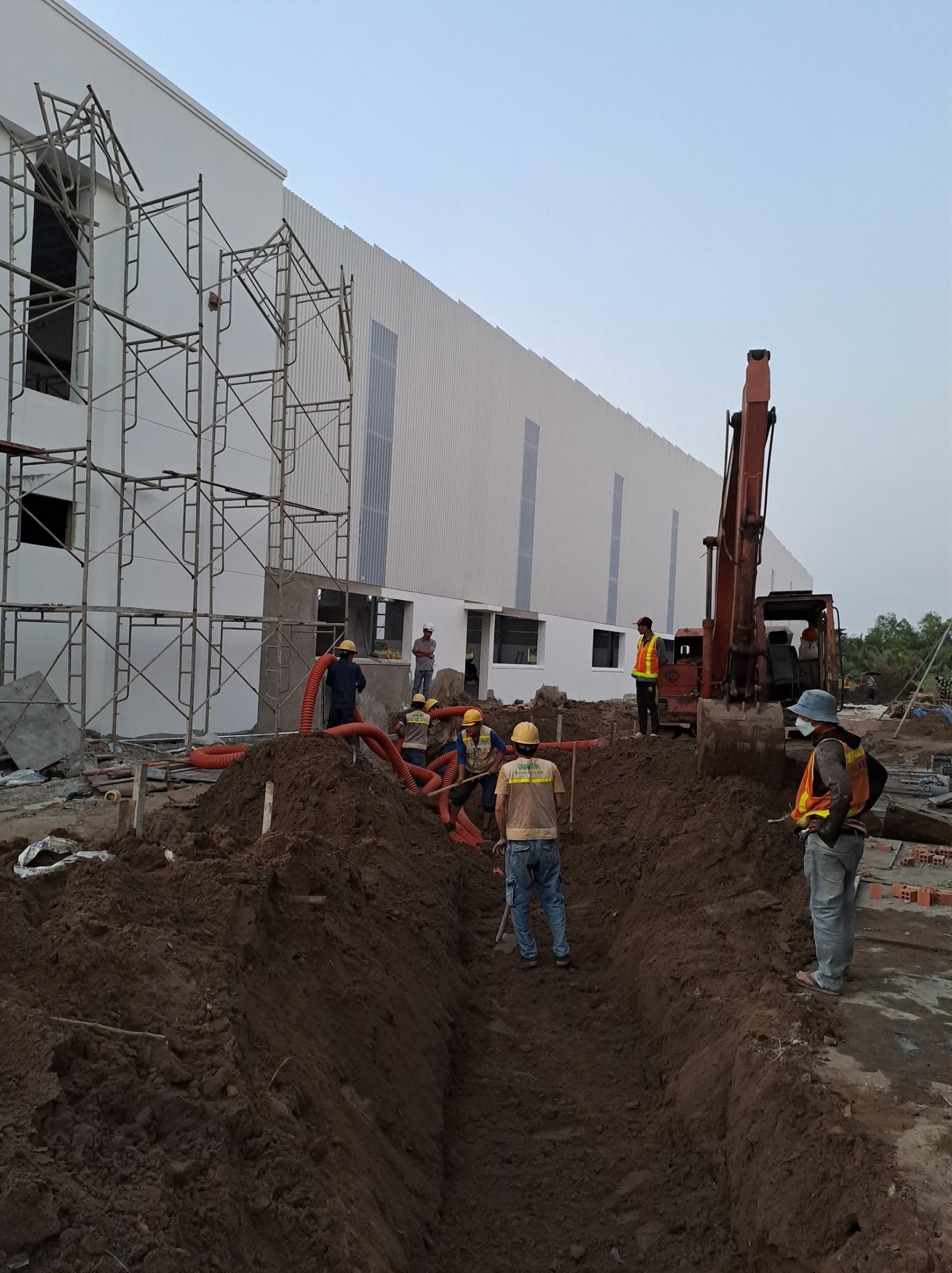
d- Installation of poles, insulators, FCO (Fused Cut-Outs), measuring devices, high and low voltage cables, and electrical cabinets.
Installation of concrete reinforced poles, underground medium voltage cables
Cables, wire colors, number rings, voltage drop, number of channels, cable length, medium voltage switching devices, measuring devices, electrical panels are all specified in the Cable Schedule document for supervision and approval before installation.
Installation of poles, insulators, switching devices, measuring devices, transformers, electrical panels must be installed in the correct location according to the approved design.
When pulling the underground medium voltage and low voltage cables through the pipes, tape can only be wrapped at both ends to facilitate cable replacement during maintenance. Tape should never be wrapped along the cable to avoid difficulties during maintenance.
The cable connection points on the electrical panel and transformer should be calculated based on the roadbed, sidewalk, and equipment location to avoid additional cable connections. The cable connection points should be numbered to avoid confusion during connection or repair.
After cable pulling is complete, test and record the insulation resistance (>10MOHM), measure the circuit, and cross-reference with the Cable Schedule document under the supervision of the consulting unit.
After transformers, electrical panels, and generators are installed, the cables are connected to the panel:
-
- All cable connections use copper-coated zinc cose heads, with marked colors for phases and protective coverings. The cose heads are crimped onto the cables using a specialized hydraulic crimper.
- After all connections are made, perform dynamic circuit testing, recheck the circuit and insulation for all cables entering and leaving the panel, ensuring there is no confusion or contact.
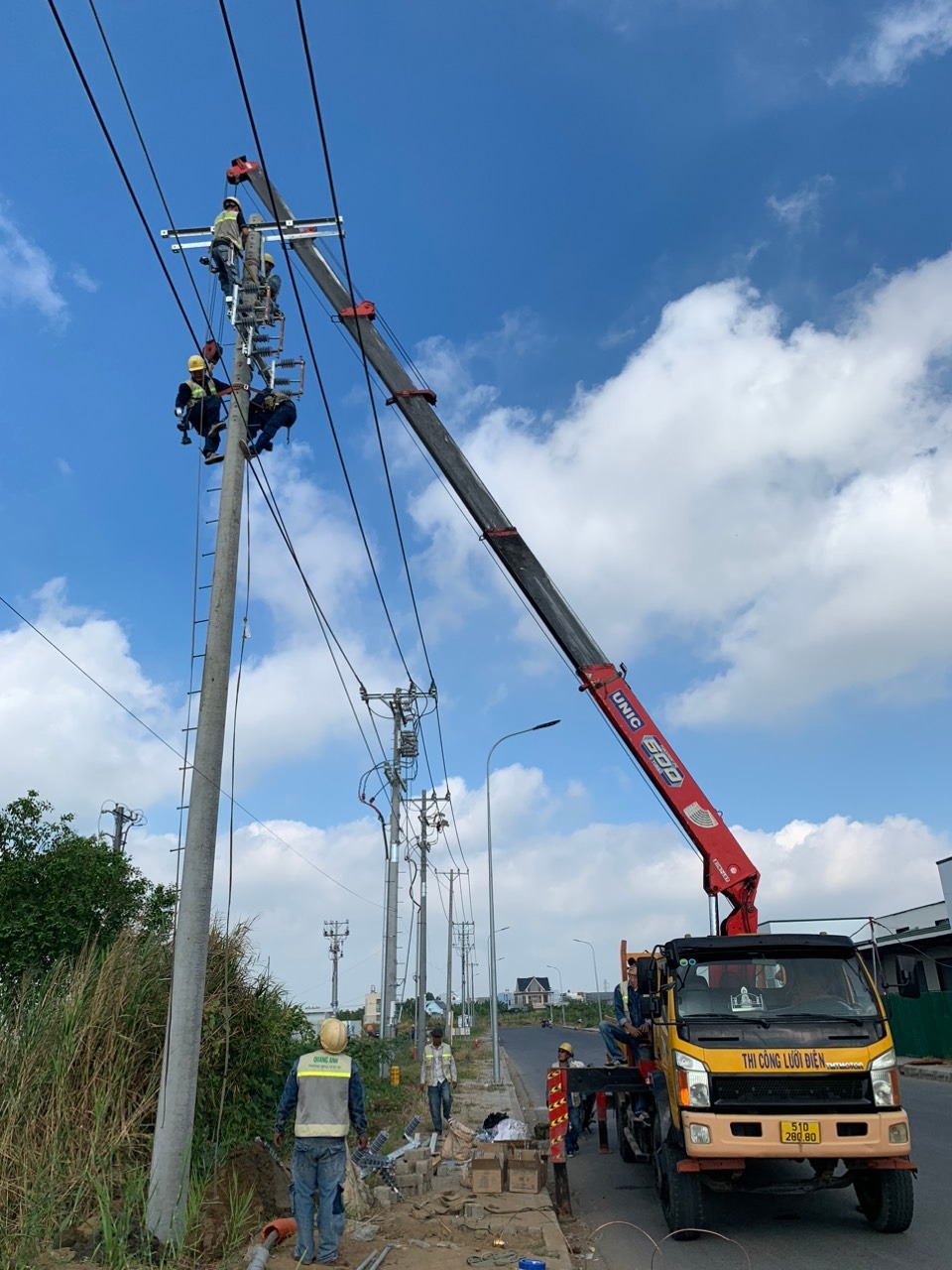
e- Installation of power cable system and power cabinet.
- Read and carefully understand the drawing to determine the location, cable route, and connection points of the equipment (coordination with the project’s technical department is necessary). Complete all installation details and submit for approval before installation. Read and clearly understand the coordinated drawings with other sections such as drainage, firefighting, telecommunications, structure, and architecture. This is to ensure that the construction does not affect the installation space and does not impact the structure or architecture of the building.

Measures for the installation of conduits, trunking, cable trays: Read and fully understand the approved construction drawings. Understand and coordinate the height and position of the cable trays with other technical systems. Mark out the positions of the tray supports on the concrete floor. Install the hanging/support system for the trays. Install the tray/trunking according to the approved drawings.
Requirements during installation: For the branch, junction, cross-floor, and cabinet positions:
Use Co, Te, and curved fittings according to the technical specifications of the manufacturer. Do not manually process them at the construction site as the three screws at the joints can scratch the cable insulation when pulled.
The Co, Te, and curved fittings must be calculated to ensure the cable bend radius meets the standards (R >= 20 times the cable section). Joints and connections must be smooth, without any rough edges or folding, and must follow the cable pulling direction (use glue to stick the joints).
This is to minimize scratching when pulling the cable. Use mushroom or round-head bolts and screws for installing the cable tray to prevent damage to the cable. A continuous copper grounding bar must be installed between two ends of the tray/trunking, and it must be connected to the building’s safety grounding system.
Dynamic cable pulling work: Create a “Cable Schedule” table that includes all necessary parameters such as cable sections, starting/ending points, wire sections, wire colors, number rings, voltage drops, number of channels, and wire length. Submit the “Cable Schedule” to the supervising consultant for approval before starting the cable pulling work.
Prepare and review the vertical section drawing for cable arrangement on the tray.
Use specialized tools to pull the cable according to the calculated length. Mark the cable ends, wrap them with nylon or tape to protect the cable core and prevent water from entering. Note that a protective measure for the cable insulation must be in place when the cable is laid out, such as using a board or nylon sheet to place over the cable. Install supporting tools such as rollers, sliding wheels on the cable line for cable pulling.
Then, start pulling the cable. Based on the cable arrangement in the vertical section drawing, arrange the cable on the tray according to each line and the distance between lines, minimizing overlap and cross-cuts between cable lines. Then, use PVC cable ties to secure the cable to the tray. Mark the cable lines according to the regulations in the drawing, with a 10m distance between two marks.
For tray positions passing through floors or walls: use metal sleeves to protect the conduit, and insert non-flammable mineral wool between the tray and the conduit. Double-check the cable quantity and quality after the installation is complete.

Installation of Motor Control Cabinet
Measures for installing the motor control cabinet:
- Read and understand the approved construction drawing.
- Understand and coordinate the high level and position of the electrical cabinet with other technical systems.
- Requirements for installation:
- The connection positions to the electrical cabinet must use phase-separated shielded heads.
- The entire electrical cabinet, after production and testing according to the prescribed standards, will be submitted for acceptance by the Owner, and the acceptance will be carried out in the factory to rectify any errors before transporting it to the construction site.
- The Contractor submits detailed installation drawings for each location of the electrical cabinet to the Supervision Consultant for approval before installation.
- Connect the pipes and cable trays to the electrical cabinet. Note that the openings for the connections to the cabinet must be sanded smooth, and then wrapped with rubber to ensure that the wires are not damaged when in contact.
- After the electrical cabinet is installed, connect the wires to the motor.
- All cables connected to the cabinet use zinc-coated copper heads, with color-coded phase marks and protection against contact. The heads are crimped onto the cable using a specialized hydraulic crimping tool.
- After the connections are made, perform a motor circuit test, recheck the circuit and insulation of all cables going in and out of the cabinet, and ensure that there is no confusion or contact.
f. Underground pipe installation in the road and sidewalk:
The pipes for the motor control cabinet’s electrical cable system will be installed underground in the road and sidewalk. There are many advantages to installing the pipes underground, such as a straight path that saves materials such as pipes and wires, high aesthetics, and, especially, no impact on the building structure, such as having to cut the road.
Basic techniques for underground pipe installation in the road and sidewalk:
- Use specialized machinery to excavate the cable channel across the road and sidewalk, in accordance with the approved design drawing.
- Install uPVC pipes, and the pipe joints must be sealed with specialized glue. The pipe ends must be cleaned before gluing, and the sections leading to the motor cabinet use flexible joints to facilitate the pulling of the electrical wires.
- The position of the pipes and waiting boxes must be accurate according to the construction drawing (Shop Drawing) to avoid being missing or having to be cut or drilled during the wire-pulling and equipment installation process.
g- Construction of lighting system for factory buildings.
Basic requirements:
Read and thoroughly understand the drawing to determine the position, installation height, and connection points of the equipment (necessary to coordinate with the technical department of the project owner). Complete all installation details and submit them for review before installation. Read and clearly understand the drawings that involve coordination with other items such as water supply and drainage, firefighting, telecommunications, structure, and architecture. This is to ensure that the construction does not affect the installation space or the structure and architecture of the building.
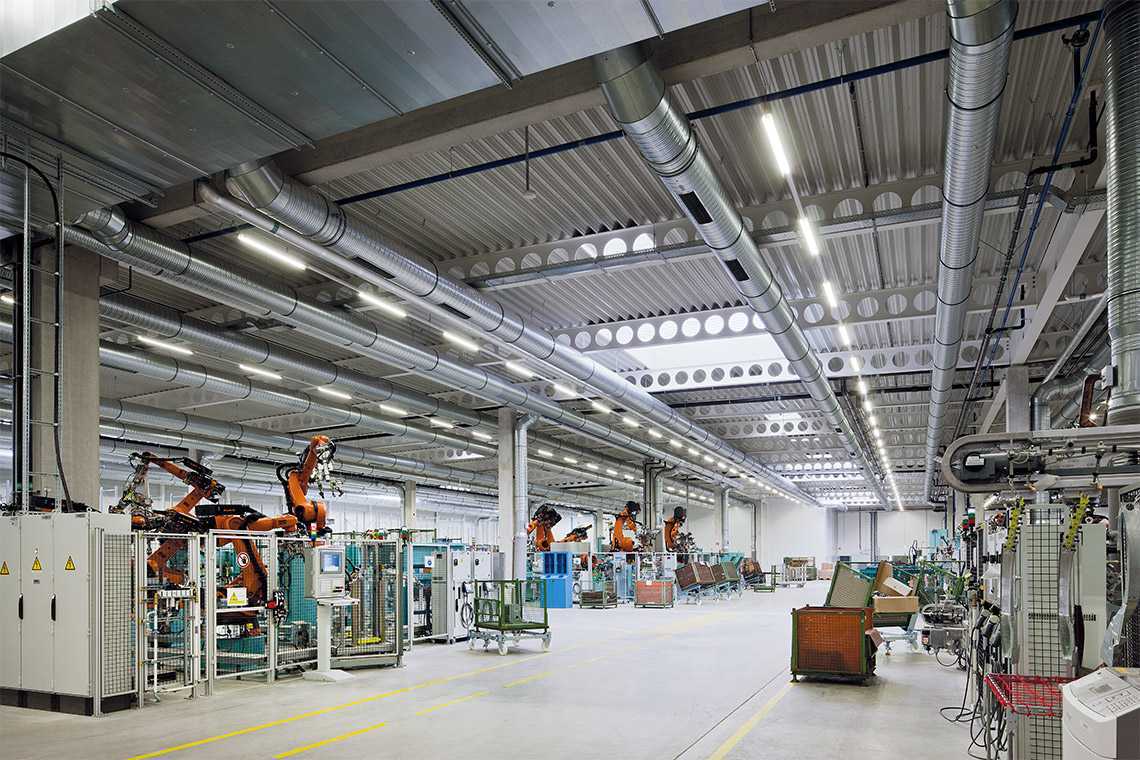
h- Installation of concealed electrical conduit within concrete floor slab.
Conduits for lighting system, light switches, and power sockets will be installed concealed within the concrete floor slab. The installation of concealed conduits within the concrete floor slab has many advantages such as: straight conduit runs, saving on materials such as conduit and electrical wires, high aesthetic value, and most importantly, it does not affect the building structure by avoiding the need to cut or drill individual concrete columns.
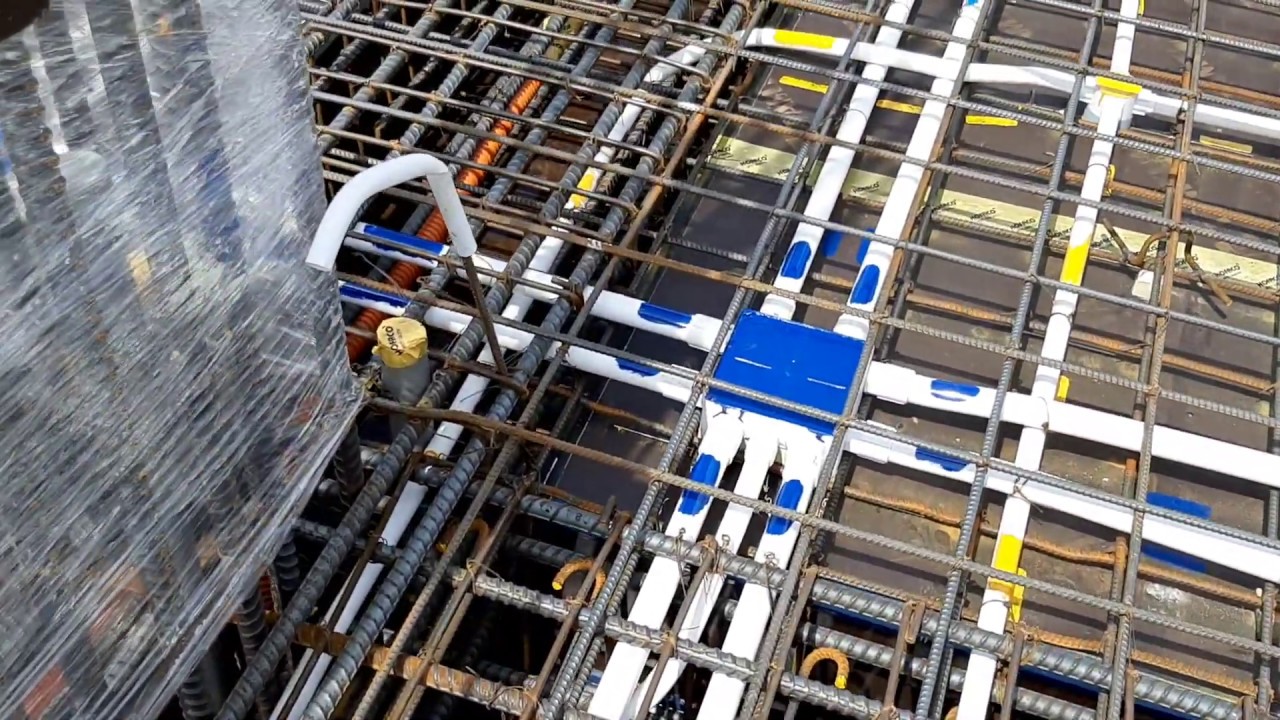
- This work will be coordinated with the progress of the construction contractor. When laying underground pipes in a completed area, the construction team will send a request to the supervising consulting unit to inspect and complete the unfinished work according to the approved construction drawing. When the work is completed, a handover report will be prepared and submitted to the construction contractor for further implementation of concrete pouring.
Basic techniques in laying underground pipes include:
- Special adhesive tape should be used to connect pipes, and the pipe ends must be cleaned before sticking.
- A specialized spring should be used to bend the pipes, and workers will be trained to bend the pipes, ensuring that the pipes are not crushed or broken at bending points.
- Power supply positions for lighting and socket outlets will be placed in soundproof boxes to facilitate pipe inspection, cable pulling, connecting or repairing in the future.
- uPVC pipes and plastic boxes will be positioned on the Cofa floor by tying 1.0mm steel wire to concrete supports to ensure that pipe laying does not affect the load-bearing capacity of the concrete floor.
- Pipe and box positions must be accurately in accordance with the construction drawing (Shop Drawing) to avoid being short or requiring cutting and drilling during cable pulling and equipment installation.
- After concrete pouring work is completed, the Cofa is dismantled. The pipes are checked by determining the positions of intermediate boxes, using specialized cables to test the pipes, and if a blockage is detected, it must be processed or a solution to bypass the blocked section must be proposed. An as-built drawing of the underground pipe system is updated and completed.
i- Installation of lighting and socket outlets.
Adjust the height and straightness of the soundproof wall boxes for lighting switches and socket outlets. Check and adjust all positions of the soundproof wall boxes according to the drawing to ensure that they are not missing or interfering with other technical systems.
Prepare a “Cable Schedule” table, which fully shows all necessary information such as cable specifications, start/end points, wire specifications, wire color, number ring, voltage drop, number of channels, wire length. Submit the “Cable Schedule” to the supervising consulting unit for approval before cable pulling.
Cable wires should only be taped at both ends when threading through underground pipes. The wires should not be taped on the line to facilitate wire replacement during system maintenance.
The waiting wire ends for connecting lighting and socket outlets must be calculated based on the false ceiling height, equipment connection position, etc. to avoid interference with other technical systems.
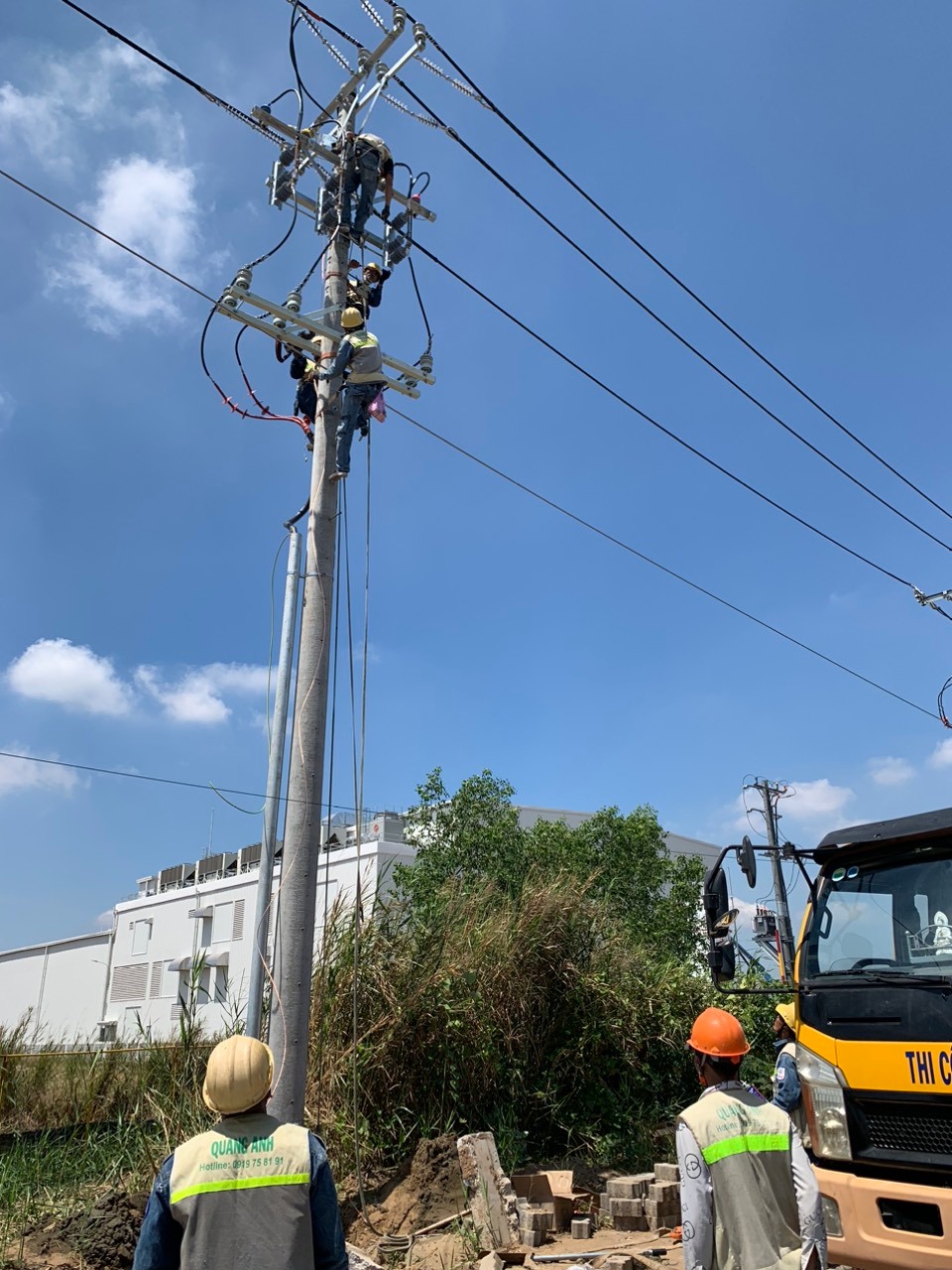
Preparation work:
The entire electrical cabinet, after being produced and tested according to the prescribed standards, will be subjected to inspection at the workshop by the contractor and submitted to the owner. Any errors will be corrected before transportation to the construction site. The contractor shall submit detailed installation drawings for each electrical cabinet location to the supervision consultant for approval before installation. Connect the pipes and cable trays to the electrical cabinet – Note that the open holes for connecting to the cabinet must be ground smooth; then use rubber pliers to cover all cut hole edges to ensure that the wires are not damaged during contact.
After the electrical cabinet is installed, connect the wires to the cabinet. All cables connected to the cabinet use zinc-coated copper lugs, with phase-marked lug covers and protection against contact. The lug heads are crimped onto the cable with a specialized hydraulic crimping tool. After the connection is complete, perform a dynamic/control circuit test of the cabinet, recheck the circuit and insulation of all cables going into/out of the cabinet – Ensure that there are no errors or contact. Mark the cable heads according to the diagram, update the actual connection to the principle diagram of the electrical cabinet, print and place the diagram inside the cabinet according to regulations. Clean the electrical cabinet to prepare for the next power-on test.
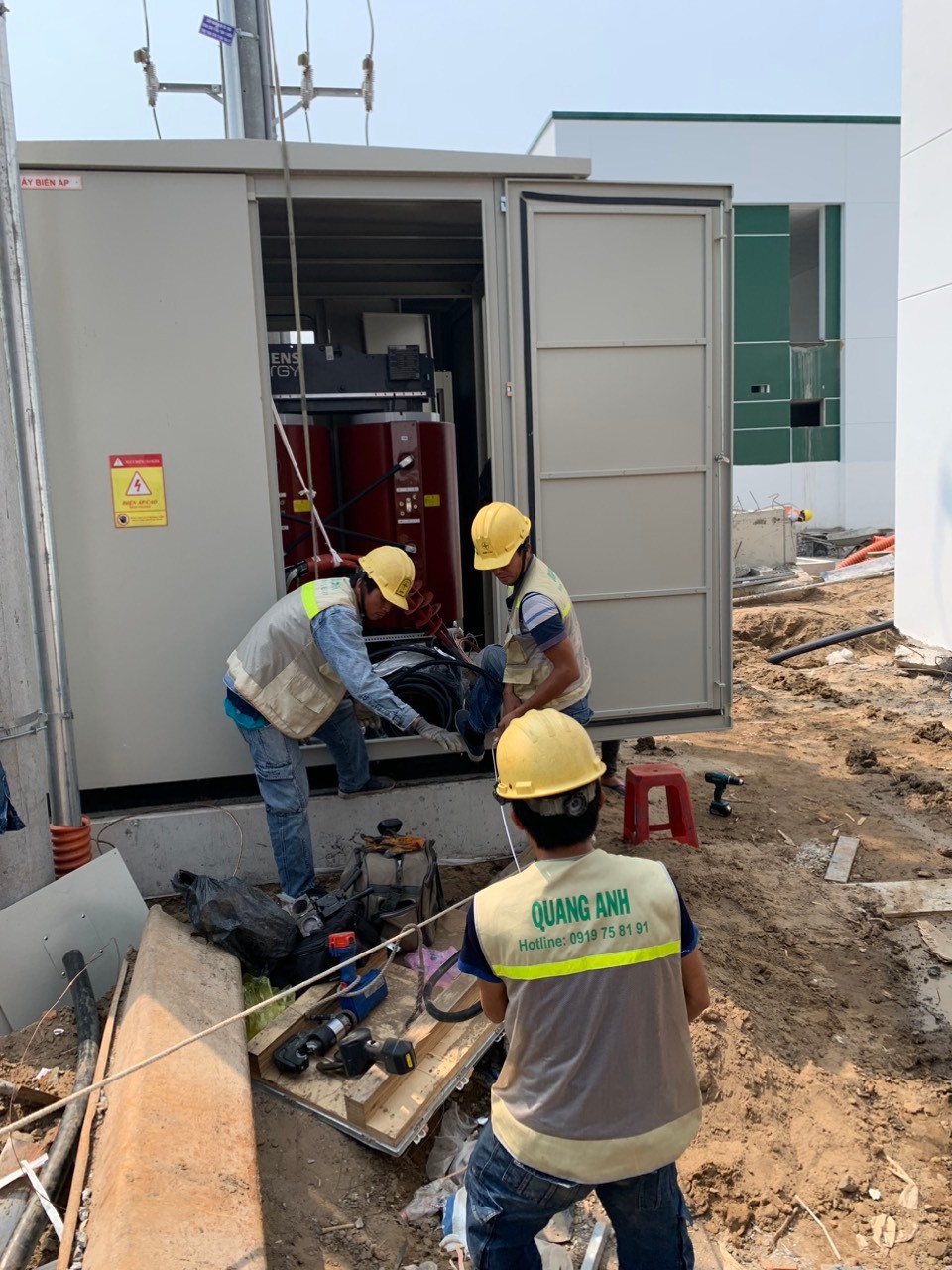
II – Electrical equipment installation:
Install light switches and power sockets.
Create a list of equipment for each area (or floor) – showing all specifications, installation locations, quantities, and getting approval from the construction manager before proceeding. Before installation, clean all concealed wall boxes (by hand or with an air compressor), cut and strip the wires correctly, not too short or too long. During installation, follow the manufacturer’s installation instructions, especially to unify the phase and neutral wire order for all power sockets. Note the orientation of the switch and socket faceplate after installation to avoid any mistakes. Label with plastic tags, clearly showing the serial number/power circuit on the switch and socket according to the drawing, update the as-built drawing and layout plan and the electrical distribution cabinet principle diagram, and keep records. Check the quality of the lighting fixtures (using temporary power) before installation. Create a “Lighting Schedule” table for approval by the construction manager before installation. Determine the installation location of the lights according to the drawing plan…
p- Installing light poles.
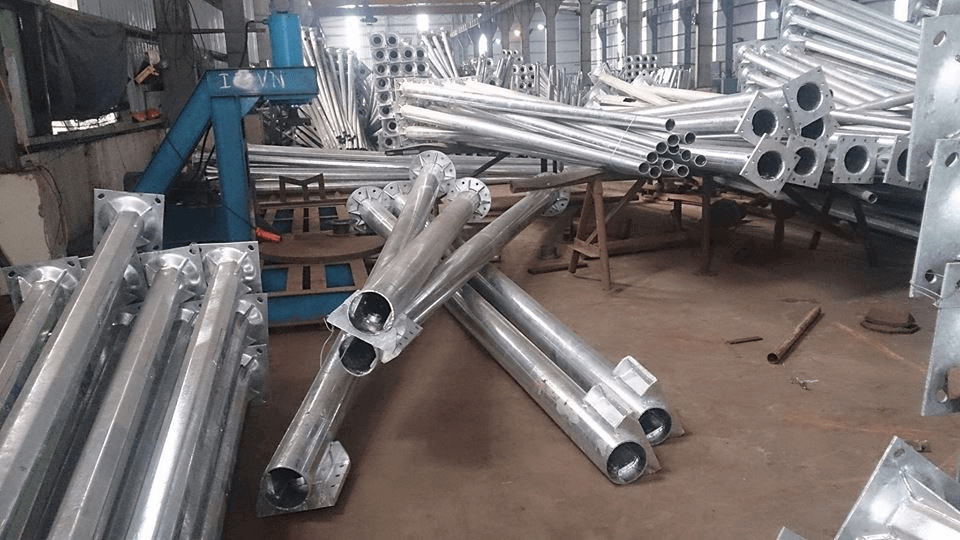
- Read and understand the approved Construction Drawing thoroughly.
- Understand and coordinate the height and position of the lamp post with other technical systems.
- Installation requirements:
- Check and test the lights before installation.
- Use a crane to install the lamp post.
- The connection points to the lamp box and electrical cabinet must use insulated wire nuts with phase marking caps.
q- Installation of outdoor lighting control panel.
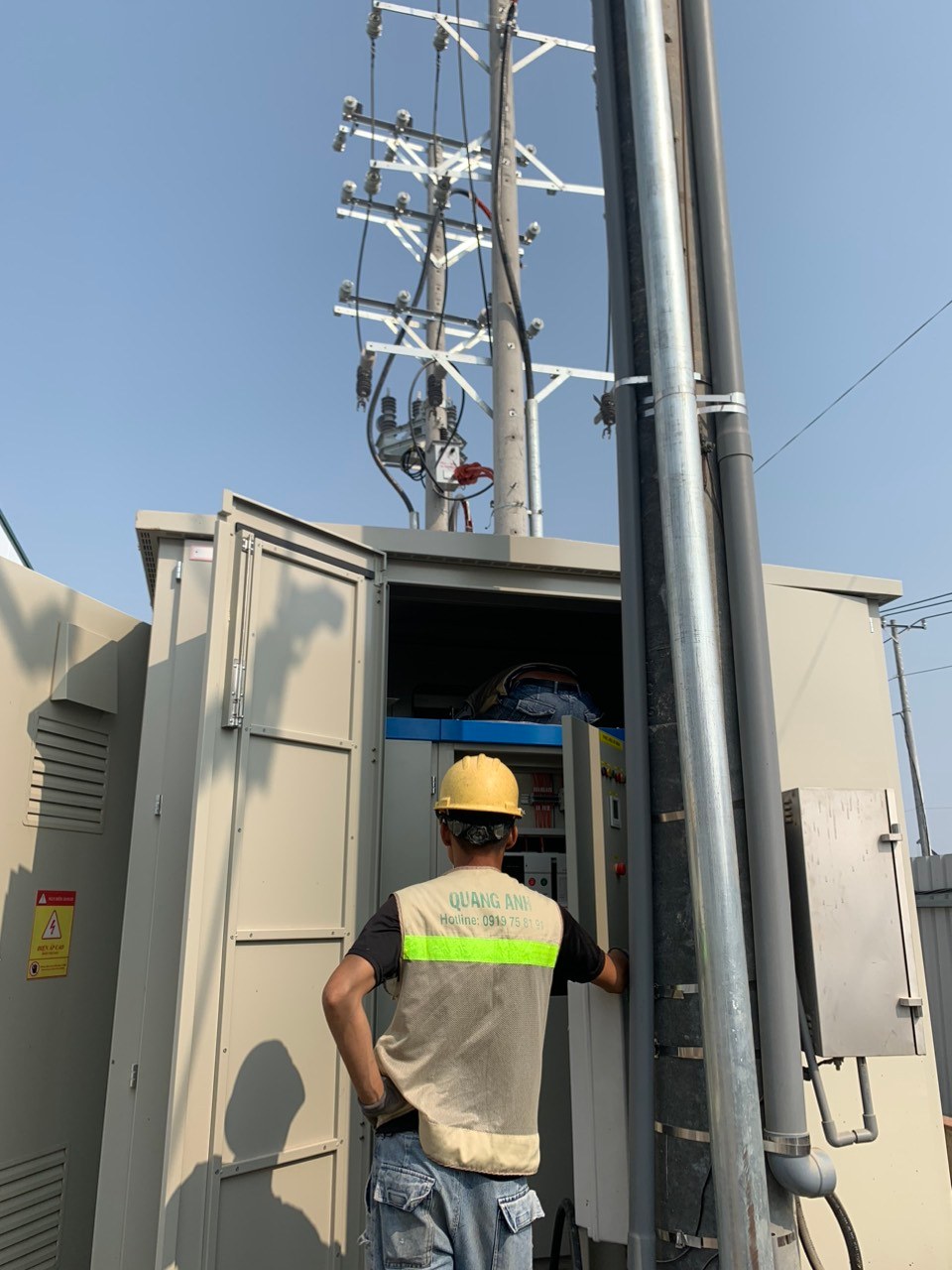
- After production and testing of the entire electrical cabinet according to the prescribed standards, the contractor will submit a request for acceptance to the Owner and organize acceptance at the workshop, correcting any errors before transporting it to the construction site.
The contractor will submit detailed installation drawings for each location of the electrical cabinet to the Supervision and Consultancy Unit for approval before installing the cabinet.
Connect pipes and cable trays to the electrical cabinet.
Note that all openings for cable connections to the cabinet must be polished to be smooth and then covered with rubber tubing to prevent damage to the wires upon contact.
After the electrical cabinet is installed, the wiring is connected to the cabinet.
All cables connected to the cabinet use zinc-coated copper cose heads with color-coded phase markings and protection against accidental contact. The cose heads are pressed onto the cables using a specialized hydraulic press.
After the wiring is connected, the dynamic/control circuit of the cabinet is tested, the circuits and insulation of all cables to/from the cabinet are checked again, ensuring that there are no mistakes or accidental contacts.
r- Operation of outdoor lighting system

- Prepare a test profile and measure parameters according to approved test templates by the supervisory consulting unit. Submit a list of testing equipment and measuring devices checked by the functional measurement agency (Center III, Q-Test). Create and submit a test plan for the system’s measurement and testing for the Investor’s approval. Submit test content and device testing measures for the supervisory consulting unit’s approval. The testing team of the Contractor comprises experienced engineers and skilled workers in the field of Testing & Commissioning – not involved in installation and construction.
After completing the task, the testing team will report the measurement results to the Construction Supervisor via the Test Report, and simultaneously report and propose the construction unit to repair and rectify any defects or technical errors.
s- Duties of operating the electrical system

- Preparing inspection files and measuring parameters according to the approved test report templates by the supervisory consulting unit. Submitting a list of testing equipment and measuring instruments verified by the accredited measuring agency (Center III, Q-Test).
- Creating and submitting the system testing and measurement plan for approval by the project owner. Submitting equipment testing content and methods for approval by the supervisory consulting unit.
- The testing team of the contractor consists of skilled engineers and workers with experience in Testing & Commissioning – not involved in installation and construction.
- After completing the task, the testing team will report the measurement results to the Construction Supervisor through test reports, as well as report and request the construction unit to repair and rectify any technical defects or errors. Preparing a record file, which is a mandatory part of the project completion dossier.
t- Electrical system construction measures.
Standards and regulations applicable to manufacturing, installation, and operation.
Electrical system.
TCVN: Vietnamese standards (TCVN 25-1991; TCVN 27-1991) TCVN 25-1991: Selection, installation of conductors TCVN 27-1991: Installation of equipment TCVN 5936-1995: Electrical cables TCVN 2103-1994: Plastic-sheathed wires TCVN 5936-1995: Electrical cables and wires, insulation testing methods DIN: Deustches Institute fur Normung IEC 269-2: Fuses IEC 439-1: Devices installed in cabinets IEC 157-1, 157-1A, 157-1B: Air-break circuit breakers IEC 255: Relays IEC 185: Current transformers IEC 502: Electrical cables IEC 79-10: Electrical equipment in rooms with oil tanks IEC 540: 1982: Electrical cables and wires, insulation testing methods BS 4678: Conduits, cable trays
BS 6360, BS 6304, BS 6346: Standards for installation
Reasons to carry out electrical construction for the workshop at Xay Lap Dien Quang Anh.
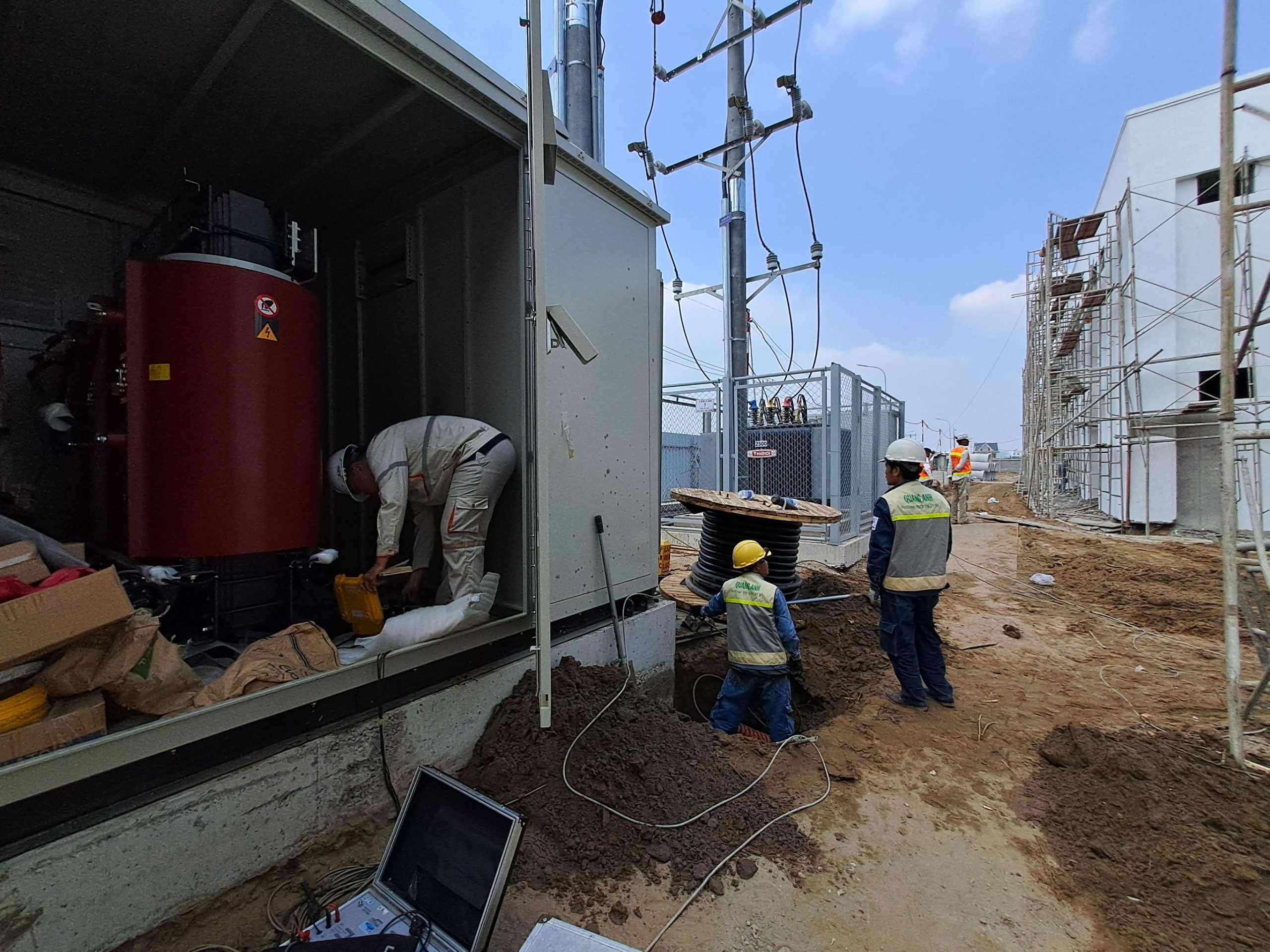
Why choose Xây Lắp Điện Quang Anh as the contractor for your factory’s electrical construction? We have many years of experience and have gained the trust of numerous partners and customers through hundreds of projects, large and small. We are now a reputable contractor for designing, constructing, installing, and operating factory electrical systems.
Xây Lắp Điện Quang Anh is a leading turnkey factory construction company in the southern region. We can handle all issues related to your factory, so you don’t have to worry about anything. If you encounter any problems, simply pick up the phone and call us.
Our company has more than 10 years of experience in constructing factory electrical systems, power lines, and substations. We have completed numerous large-scale factory electrical construction projects. We are also an authorized dealer of reliable industrial electrical equipment.
Our prices for factory electrical construction are competitive, and we provide solutions and construction schedules tailored to your needs. Our team of designers and constructors is highly skilled and professional, and we provide a comprehensive warranty and maintenance service.
Contact us now at Hotline: 0919758191 to receive a quotation for your factory electrical construction project, receive the best support, and select suitable factory electrical equipment that meets your needs.
Quang Anh CE Co., Ltd.
Office:Unit 02, 08th floor, Pearl Plaza Building, 561A Dien Bien Phu Street, Ward 25, Binh Thanh District, Ho Chi Minh City, Vietnam
Hotline: 0919758191
Website: quanganhcgte.com – Email: sales@quanganhcgte.com
Tax code: 0316365712

 Tiếng Việt
Tiếng Việt 简体中文
简体中文 Deutsch
Deutsch 日本語
日本語 한국어
한국어 ไทย
ไทย Русский
Русский Français
Français

